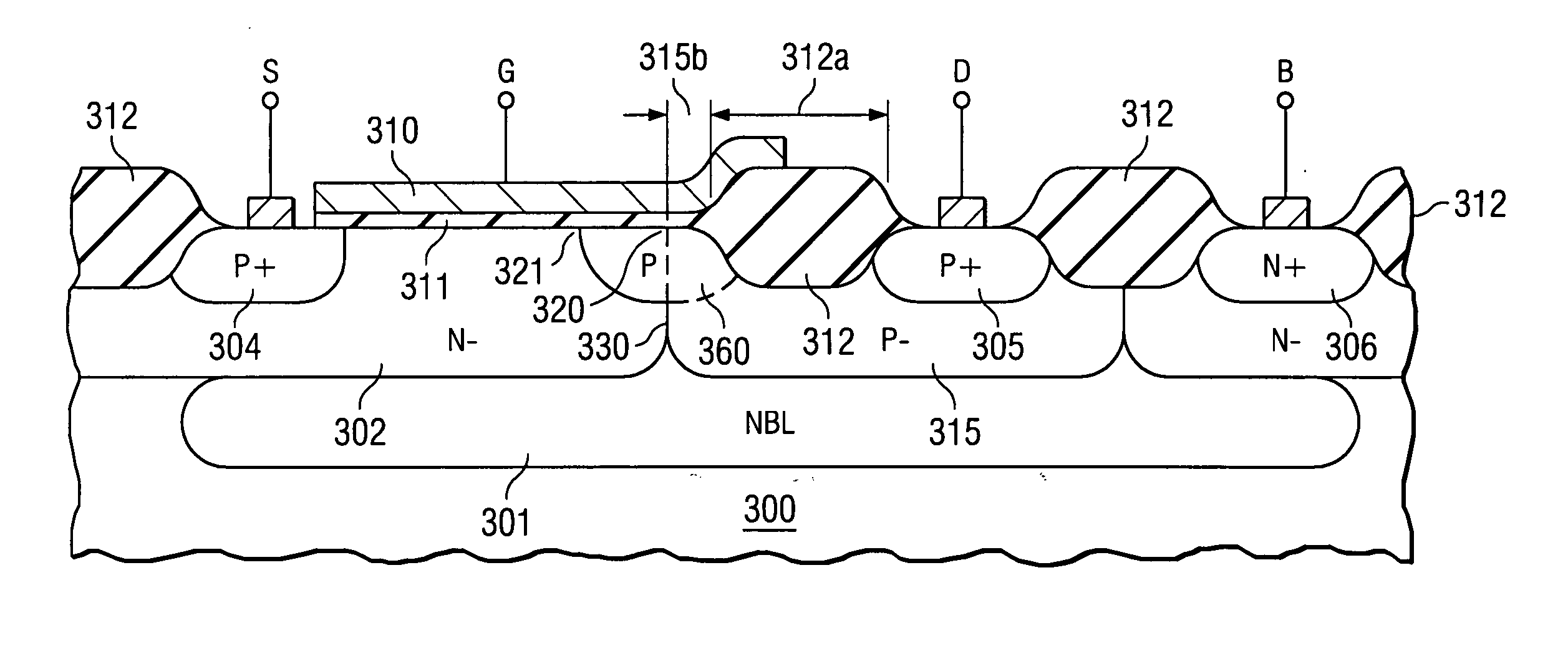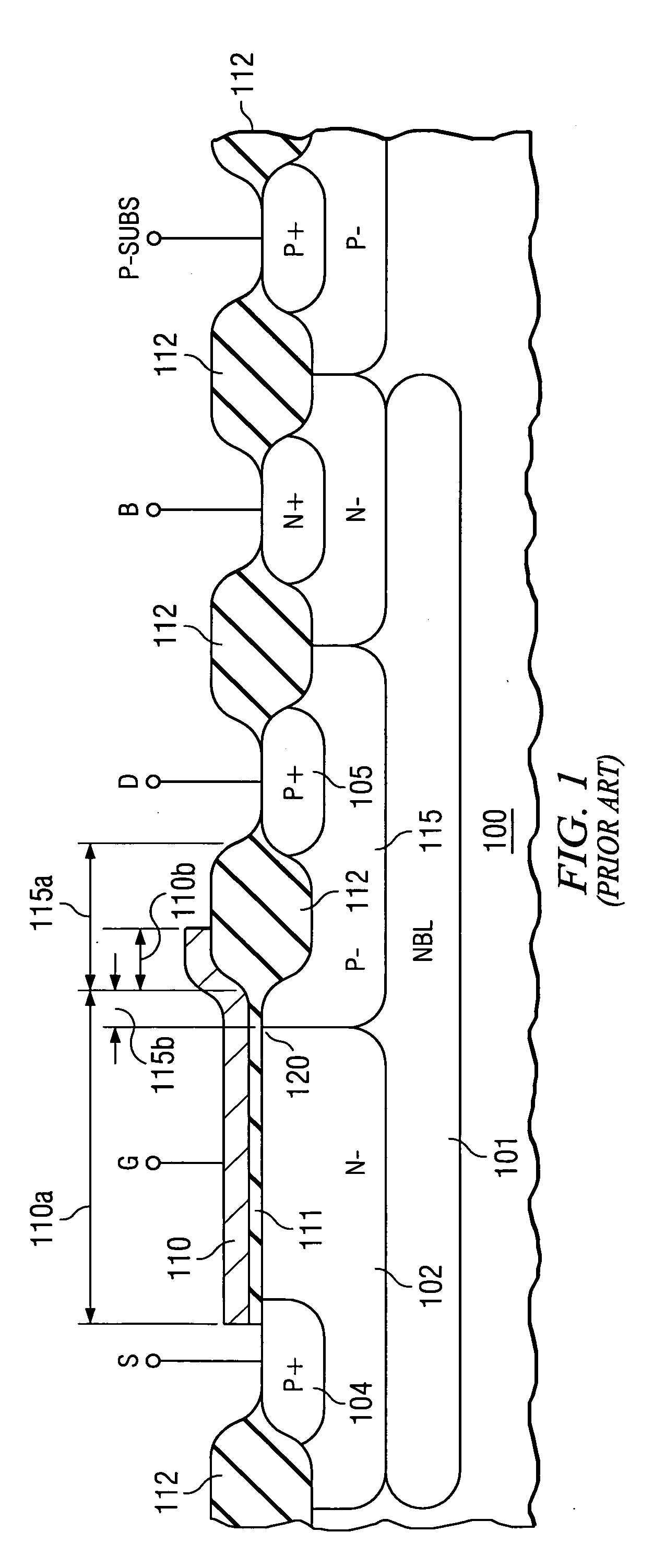Low cost fabrication method for high voltage, high drain current MOS transistor
a low-cost, mos transistor technology, applied in the direction of semiconductor devices, electrical equipment, basic electric elements, etc., can solve problems such as contradictions or undesirable side effects, and achieve the effects of reducing the resistance of process tolerance regions, eliminating resistance uncertainty, and high resistance regions
- Summary
- Abstract
- Description
- Claims
- Application Information
AI Technical Summary
Benefits of technology
Problems solved by technology
Method used
Image
Examples
Embodiment Construction
[0022] The impact of the present invention can be best appreciated by comparing the embodiments of the present invention with the shortcomings of devices made with known technology. The schematic cross section of FIG. 1 shows a portion of an integrated circuit on a semiconductor chip including a drain-extended MOS transistor as fabricated by known technology. Since the example of FIG. 1 illustrates a p-channel MOS transistor, well region 115 is a p-doped well surrounding p+ drain 105, and well region 102 is an n-doped well, over which gate oxide 111 is located. It was pointed out above that well 102 and well 115 form a junction, which intersects with the gate oxide 111 at location 120, defining the length 115b of well 115 under the gate oxide 111. It was further pointed out that region 115a of well 115, protected by the field oxide 112, defines the transistor breakdown voltage, and that the length 115a plus the length 115b define the drain resistance.
[0023] The schematic cross sect...
PUM
 Login to View More
Login to View More Abstract
Description
Claims
Application Information
 Login to View More
Login to View More - R&D
- Intellectual Property
- Life Sciences
- Materials
- Tech Scout
- Unparalleled Data Quality
- Higher Quality Content
- 60% Fewer Hallucinations
Browse by: Latest US Patents, China's latest patents, Technical Efficacy Thesaurus, Application Domain, Technology Topic, Popular Technical Reports.
© 2025 PatSnap. All rights reserved.Legal|Privacy policy|Modern Slavery Act Transparency Statement|Sitemap|About US| Contact US: help@patsnap.com



